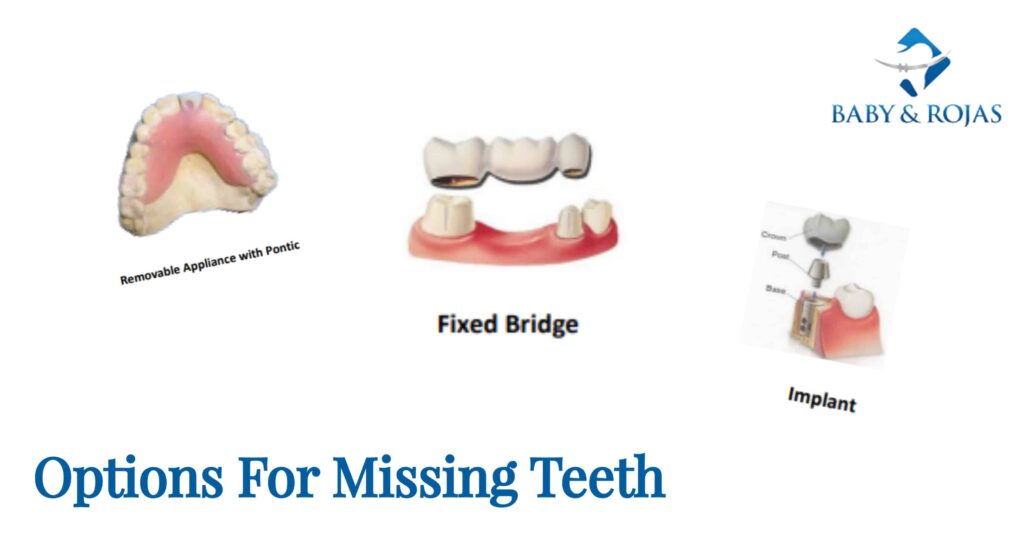During your consultation, you may have been told by one of our doctors that you are missing one or more teeth. This information is to inform you of your possible options for replacing missing teeth, and a brief description of each.
There are three basic ways to replace a missing tooth or missing teeth: fixed bridge, removable appliance, or a dental implant. These prosthetic replacements are actually placed by the general dentist after the orthodontics has been completed and are not included as part of orthodontic treatment.
A fixed bridge involves removing healthy enamel from the teeth on either side of the space where the tooth is missing. Your general dentist will cut down these teeth in order to create two crown abutments connected to a false tooth in the middle.
In certain situations, a removable appliance is the most practical solution for replacing missing teeth. A removable appliance consists of a piece of plastic with a false tooth (or teeth) attached to a metal and acrylic removable retainer. Removable appliances are the least aesthetically pleasing tooth replacement option. This is because removable appliances contain clasps that are often impossible to completely conceal. Sometimes a removable appliance serves as a temporary solution until the patient decides what option they would like to choose.
An implant is another way to replace a missing tooth. Simply put, an implant is a titanium screw that is placed into your bone. Once the bone has had a chance to grow and fully secure around the screw, a tooth-shaped crown will then be placed on the screw to give you a natural-looking tooth. This is the most favourable option as healthy teeth on either side of the implant are not affected. This option also provides and very good aesthetic outcome. It should be noted that an implant cannot be placed until a patient has completed their growth (a temporary appliance is usually placed in the meantime).
There are pros and cons to each option. Your general dentist (or an appointed specialist) along with the orthodontist will help you decide what is best for you and your situation.


